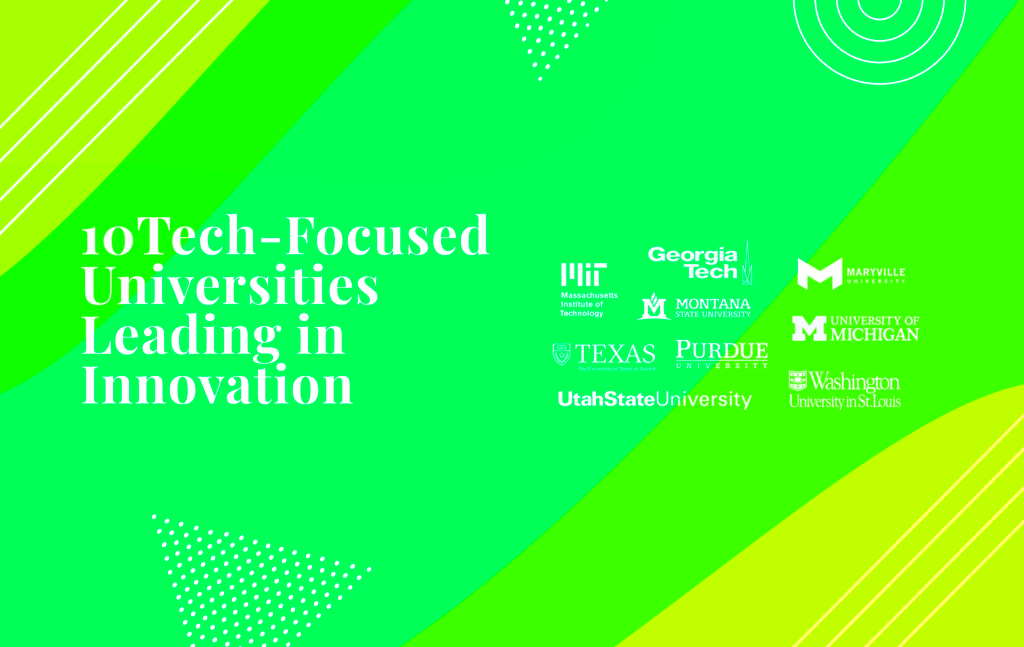Internationally acclaimed for their incredible programs and innovation contributions, Tech universities in the USA are known for great things. They do not only emphasize education but also play a significant part in the advancement of
technology and research. Most have state-of-the-art facilities and faculty who are at the forefront of their areas of expertise.The students here acquire skills that equip them to face future obstacles; hence these institutions have an important role to play in global
technology.
Factors Contributing to Innovation in Tech Universities

It would be wise to look into the reasons why tech institutions are often the most productive centers of innovation. They include amongst others:
- Research Funding: Significant investment from government and private sectors helps universities conduct groundbreaking research.
- Collaborative Environment: A culture that encourages teamwork between students and faculty fosters creative solutions.
- State-of-the-art Facilities: Access to advanced labs and technology enables hands-on learning and experimentation.
- Interdisciplinary Programs: Courses that combine various fields, such as engineering and computer science, lead to innovative ideas.
- Strong Alumni Network: Successful graduates often mentor current students, providing guidance and support.
Those all together create a nourished ecosystem that guarantees the growth of new concepts which in turn brings about technologies.
Top Tech Universities Fostering Global Innovation

In the United States, many universities are known for their innovation. These include some of the best:
| University Name | Notable Programs | Research Areas |
|---|
| Massachusetts Institute of Technology (MIT) | Engineering, Computer Science | Artificial Intelligence, Robotics |
| Stanford University | Business, Computer Science | Entrepreneurship, Cybersecurity |
| California Institute of Technology (Caltech) | Physics, Engineering | Aerospace, Nanotechnology |
| Carnegie Mellon University | Computer Science, Robotics | Machine Learning, Human-Computer Interaction |
These universities are not only based on education rather they bring many changes globally through
technology and innovations. Apart from making use of different research and practical education experience that makes it easy to face any problems in the world which will determine tomorrow’s
technology.
Research and Development Initiatives at Leading Universities
In October 2023 you can expect training with data and other skill sets.
- Funding Sources: Universities receive funding from various sources, including government grants, private sector partnerships, and donations from alumni. This financial support is essential for sustaining long-term research projects.
- Interdisciplinary Research Centers: Many universities establish research centers that combine expertise from different fields. This approach fosters innovation by encouraging diverse perspectives and ideas.
- Student Involvement: Students are often included in research projects, giving them hands-on experience. This not only enhances their learning but also contributes fresh ideas to ongoing research.
- Real-World Applications: R&D initiatives frequently focus on practical applications, such as developing new technologies or improving existing ones. This focus ensures that research leads to tangible benefits for society.
In the most part, R
Industry Partnerships and Collaboration Opportunities
The world of
technology has seen an upsurge in academic-industry collaborations. These relationships help to connect theoretical studies with practical work. Some major gains derived from such collaborations are outlined below:
- Access to Resources: Universities gain access to industry resources, such as funding, technology, and expertise. This support enhances research capabilities and leads to groundbreaking discoveries.
- Real-World Experience: Students can benefit from internships and co-op programs, providing them with valuable experience and networking opportunities.
- Joint Research Projects: Many universities collaborate with companies on research projects that align with industry needs. This collaboration ensures that research is relevant and impactful.
- Innovation Hubs: Some universities establish innovation centers or labs in partnership with industry leaders. These hubs create an environment for brainstorming, prototyping, and testing new ideas.
Tech universities have a great role in influencing the future of
technology through these partnerships, making sure that industry needs dictate research and education.
Student Programs Promoting Innovation
The student level in tech universities is meant for creativity to flourish and encourage innovations. The programs help the students with tools and resource that would help turn their ideas into reality. Here are some notable programs:
- Hackathons: Many universities organize hackathons, where students work in teams to create projects within a short timeframe. These events foster teamwork, creativity, and problem-solving skills.
- Entrepreneurship Programs: Universities often offer courses and resources to support student entrepreneurs. These programs provide mentorship, funding opportunities, and networking events.
- Innovation Competitions: Some universities host competitions that challenge students to develop innovative solutions to specific problems. Winners often receive funding or support to further develop their ideas.
- Research Assistantships: Students can work as research assistants, collaborating with faculty on cutting-edge projects. This experience enhances their learning and allows them to contribute to meaningful research.
This student programs support not only innovation but also prepare students for prosperous careers in
technology. This way, tech universities motivate the next generations of creative inventors through practical application.
The Role of Faculty in Driving Technological Advancements
The innovation ecosystem at tech universities relies heavily on faculty members. They provide guidance through their expertise, mentorship, and dedication towards research thereby driving technological advancement; they also inspire students who seek out the unknown. This is how faculty facilitate innovation:
- Expertise and Knowledge: Faculty members often have extensive experience in their fields, bringing valuable insights into current trends and challenges. Their knowledge guides research projects and helps shape curriculum development.
- Research Leadership: Many faculty members lead groundbreaking research projects that push the boundaries of technology. They secure funding and collaborate with other institutions and industries to address pressing issues.
- Mentorship: Faculty serve as mentors to students, offering guidance and support throughout their academic journeys. This mentorship fosters a culture of inquiry and encourages students to think critically and creatively.
- Interdisciplinary Collaboration: Faculty often collaborate across disciplines, bringing together different perspectives and expertise. This collaboration leads to innovative solutions that address complex problems.
In the end, faculty are more than just teachers; they are agents of change. Through their commitment to both research and education, they help determine where technology is headed in the future, so that students can meet tomorrow’s difficulties.
FAQ About Tech Universities and Innovation
A lot of individuals have inquiries concerning the contribution of technology colleges in the promotion of creative ideas. These are some of the commonly posed queries that would clarify how they influence:
What makes tech universities different from traditional universities?
- Tech universities often focus on applied sciences and technology, emphasizing hands-on learning and research in real-world settings.
How do tech universities promote innovation?
- They foster a collaborative environment, provide access to cutting-edge resources, and encourage interdisciplinary research and projects.
Are there opportunities for students to get involved in research?
- Yes, students can participate in research projects, internships, and innovation competitions, allowing them to gain practical experience.
How do industry partnerships benefit students?
- These partnerships provide students with internships, job opportunities, and exposure to real-world challenges, enhancing their education and career prospects.
Can faculty members influence innovation in the industry?
- Absolutely! Faculty often collaborate with industry leaders on research projects, leading to advancements in technology and solutions to pressing problems.
The very significant role Tech Schools have in shaping technology innovation and success for students is what this Frequently Asked Questions (FAQs) section draws attention to.
Conclusion on the Impact of Tech Universities in Global Innovation
So, in short, global innovation is greatly impacted by technology universities. They amalgamate premiere research with partnerships in the industry and learning programs creating an environment that promotes creativity and problem-solving. Such institutions not only lead in technical advancements but are also keys for training the upcoming generation of innovators.Hence, as we gaze into the future, it is obvious that these tech universities will remain fundamental players in steering technology across various countries around the world.From faculty to industry collaborations to student involvement, new ideas are nurtured and developed for the sake of society. As we progress with time, it is important to note how essential these technological training colleges are in enabling global innovation. They incubate those thoughts which have the potential to change our world as well as tackle its problems.Many sectors depend on innovation for their survival, ranging from healthcare through agriculture up to energy. Such institutions create innovative programs across all subjects which are then taken out into practice. The best way to put them is that they facilitate a breeding place for transformation ideas that serve human need.
 It would be wise to look into the reasons why tech institutions are often the most productive centers of innovation. They include amongst others:
It would be wise to look into the reasons why tech institutions are often the most productive centers of innovation. They include amongst others: In the United States, many universities are known for their innovation. These include some of the best:
In the United States, many universities are known for their innovation. These include some of the best:
 admin
admin








